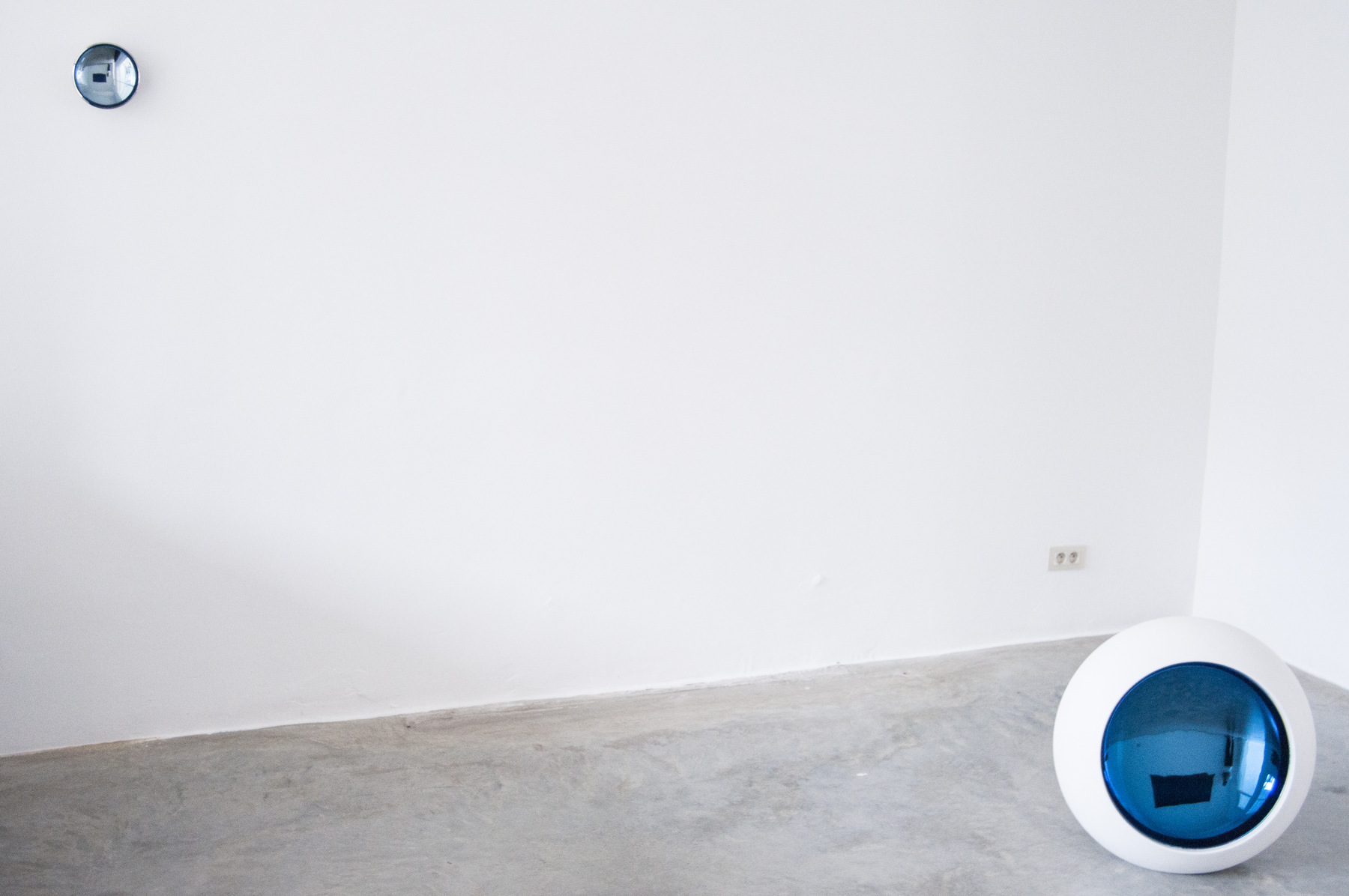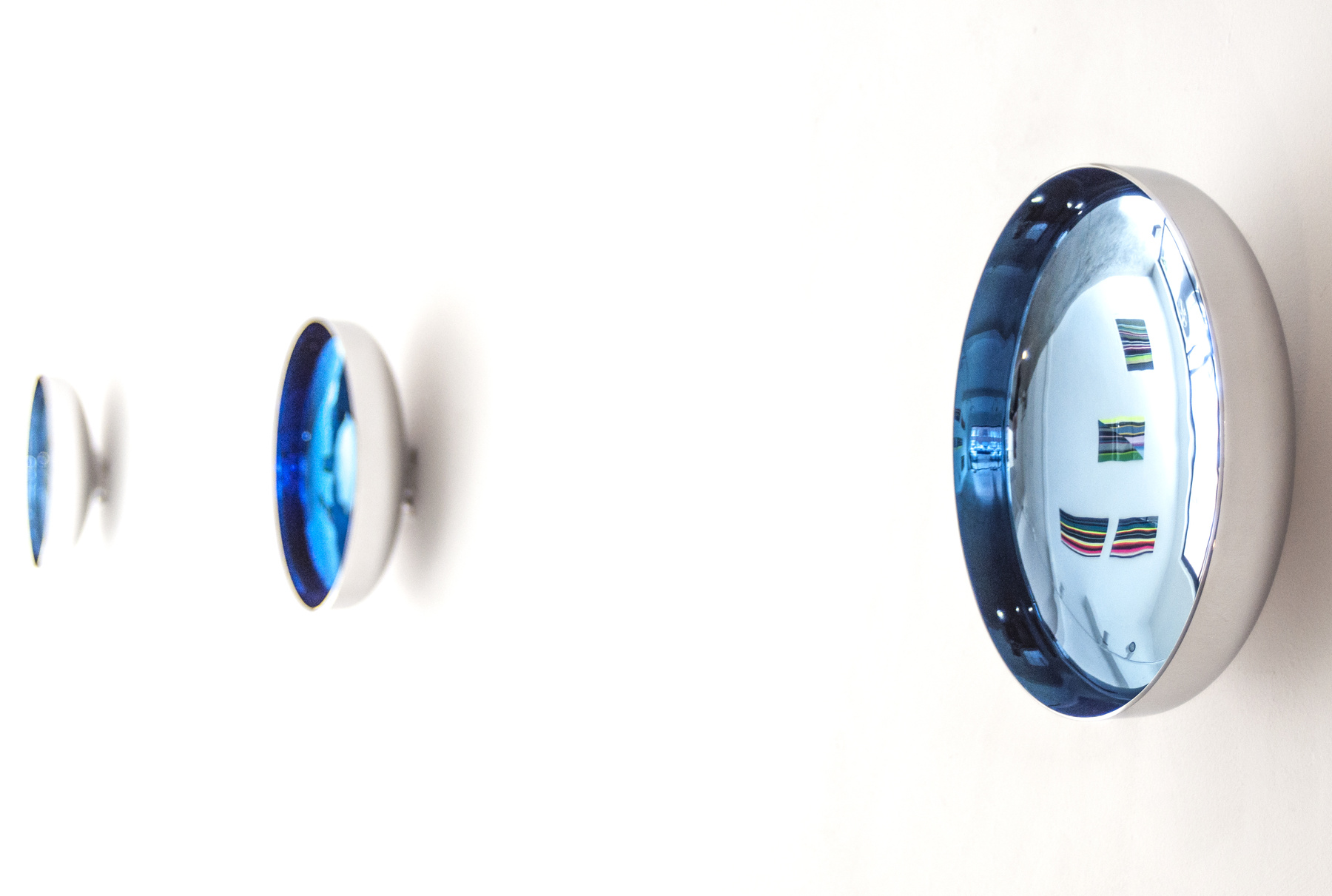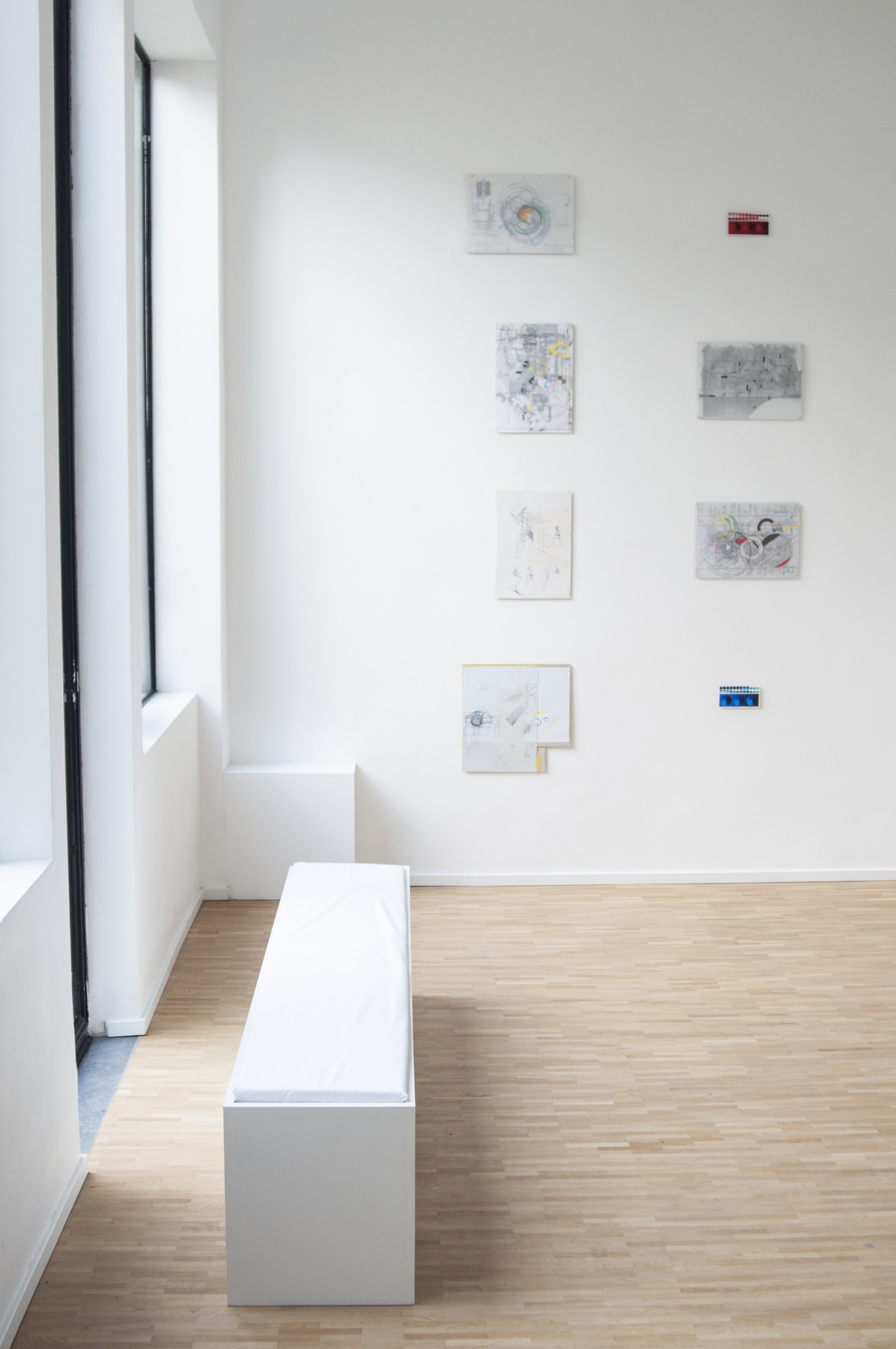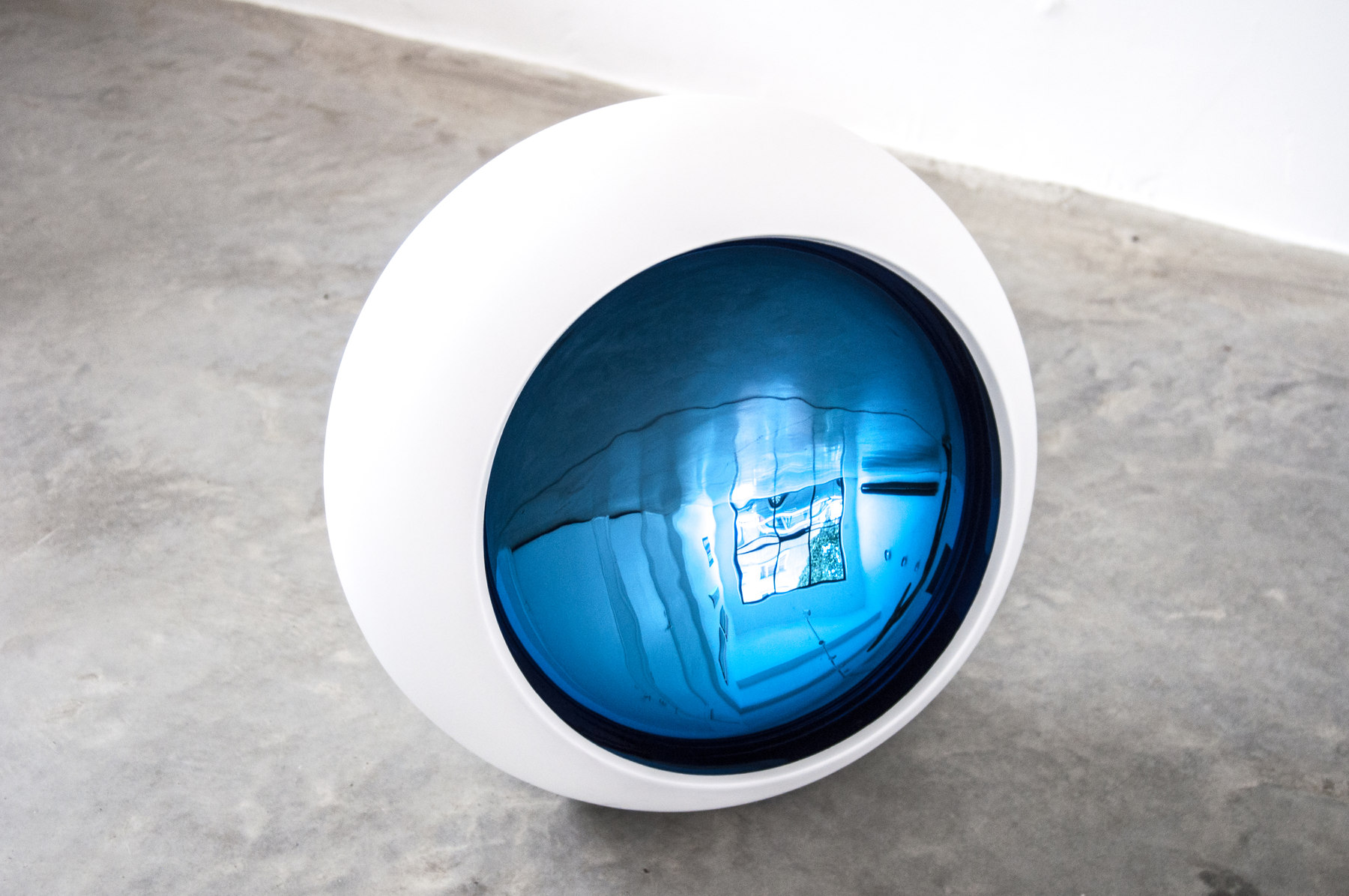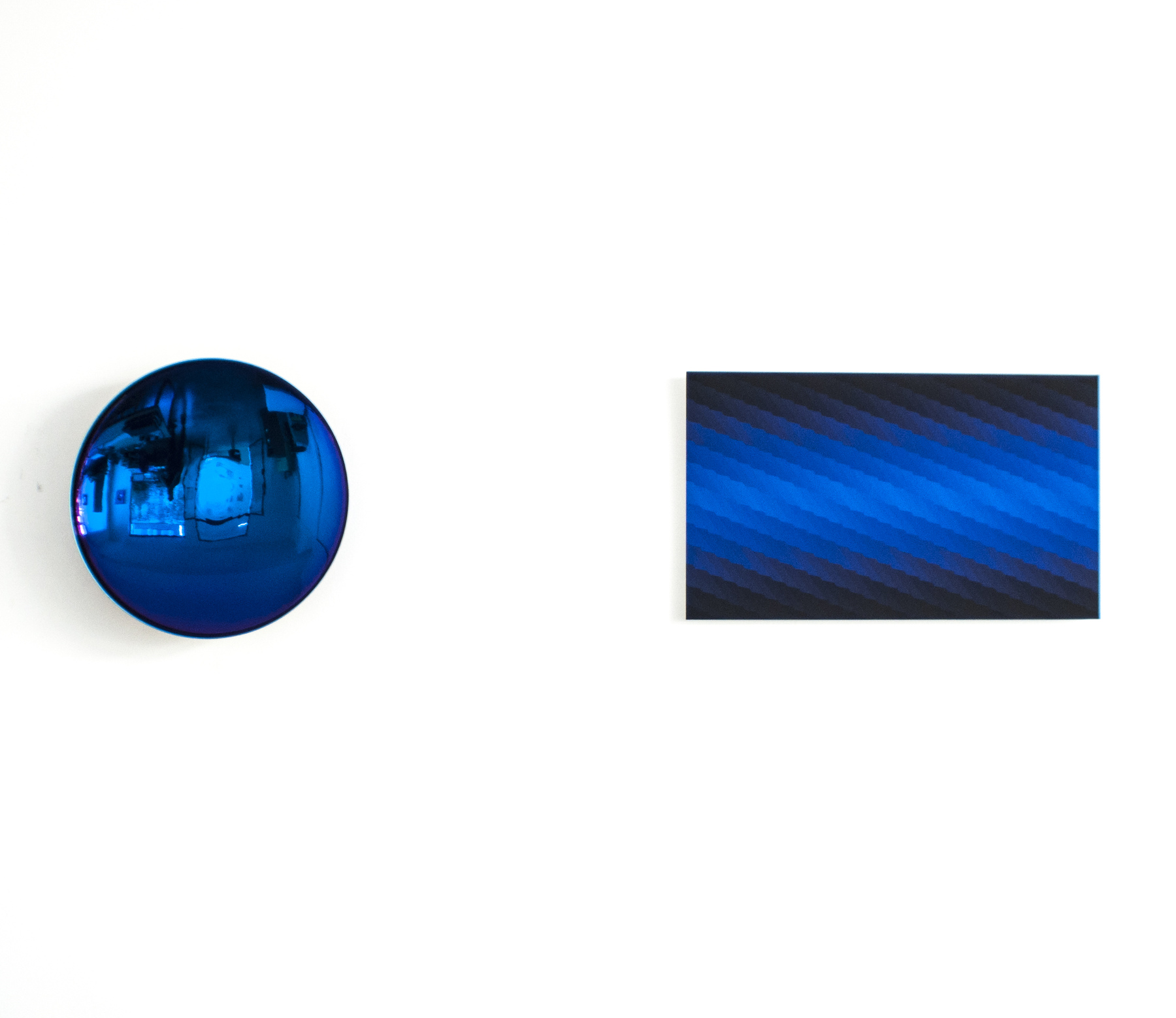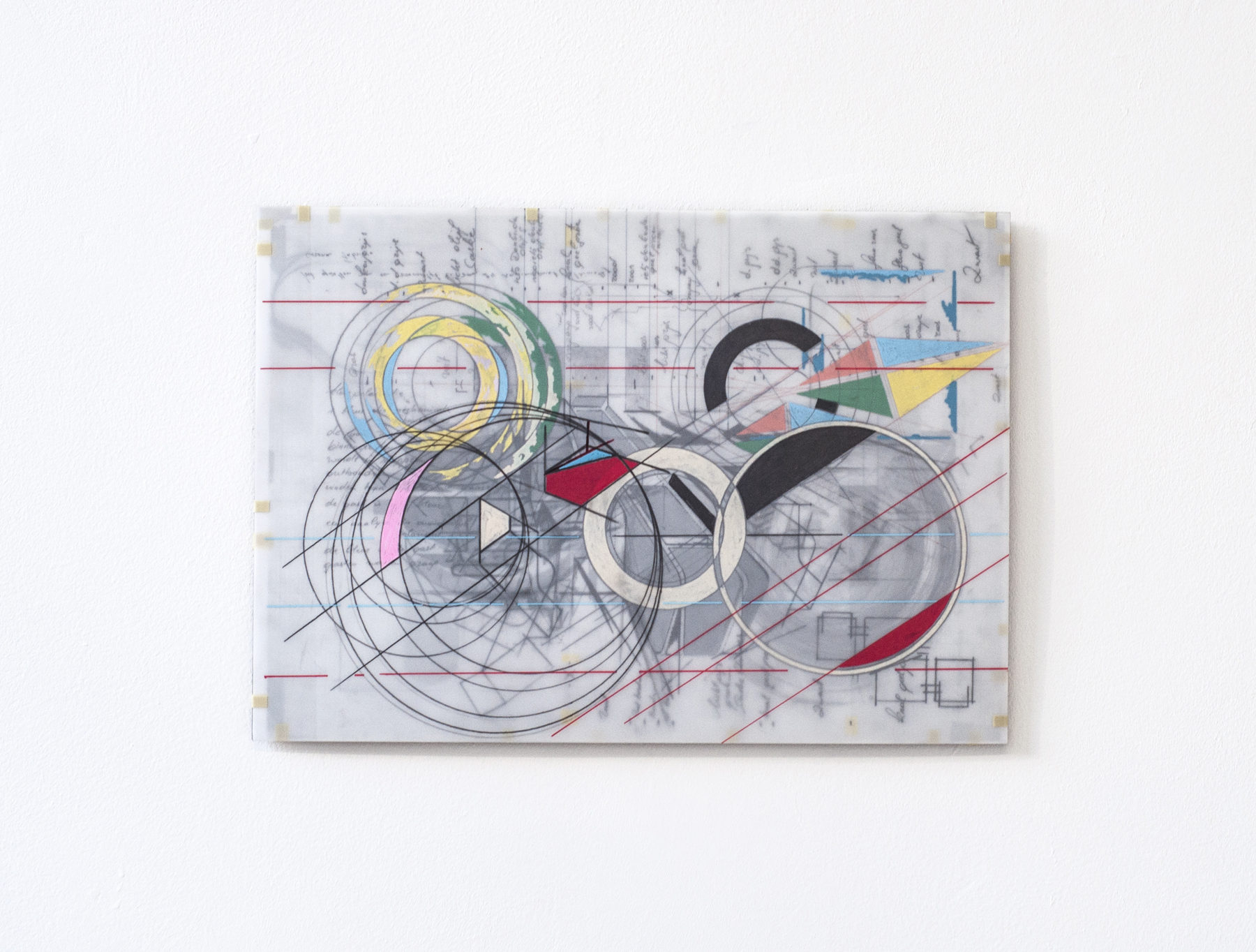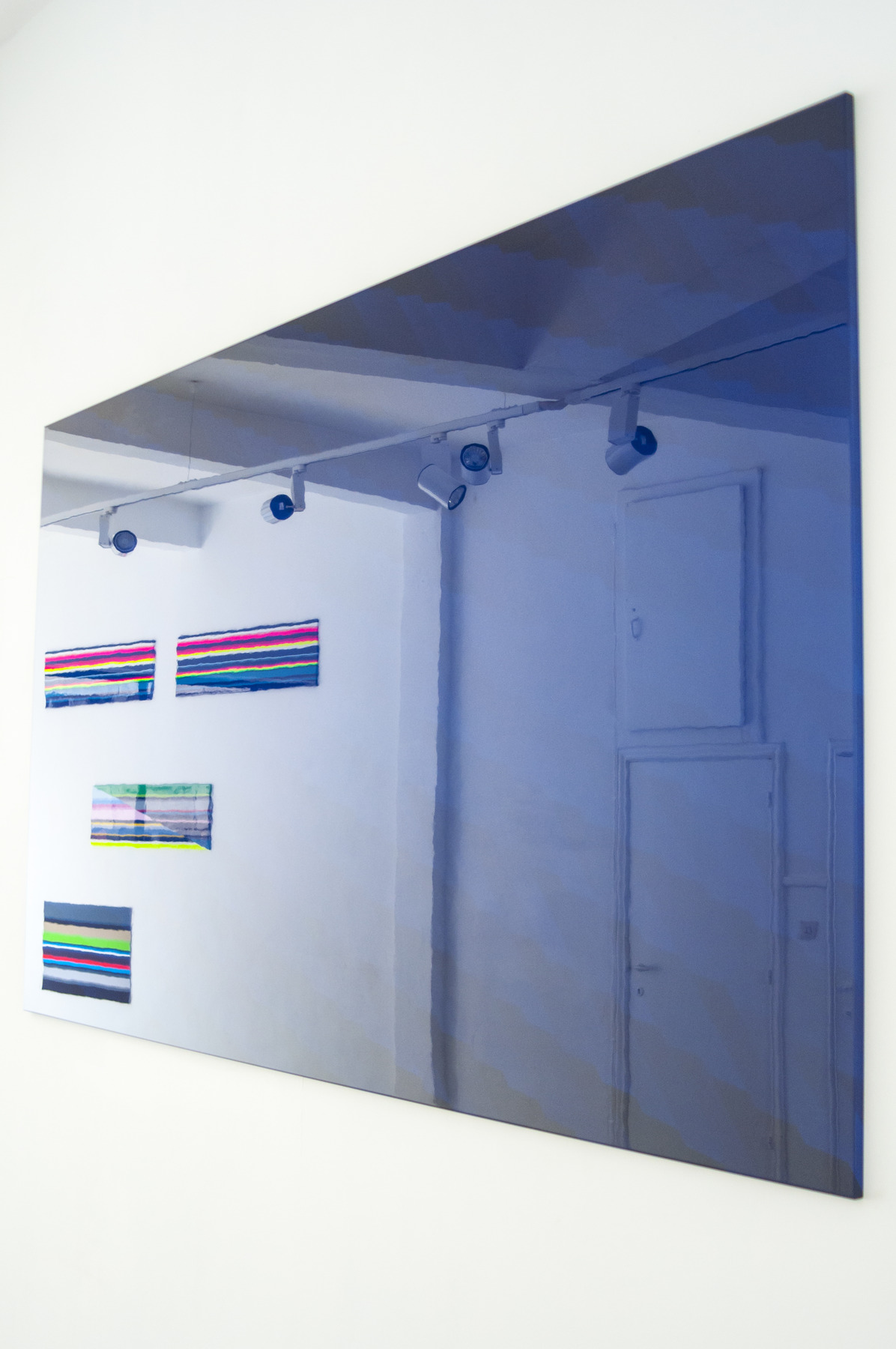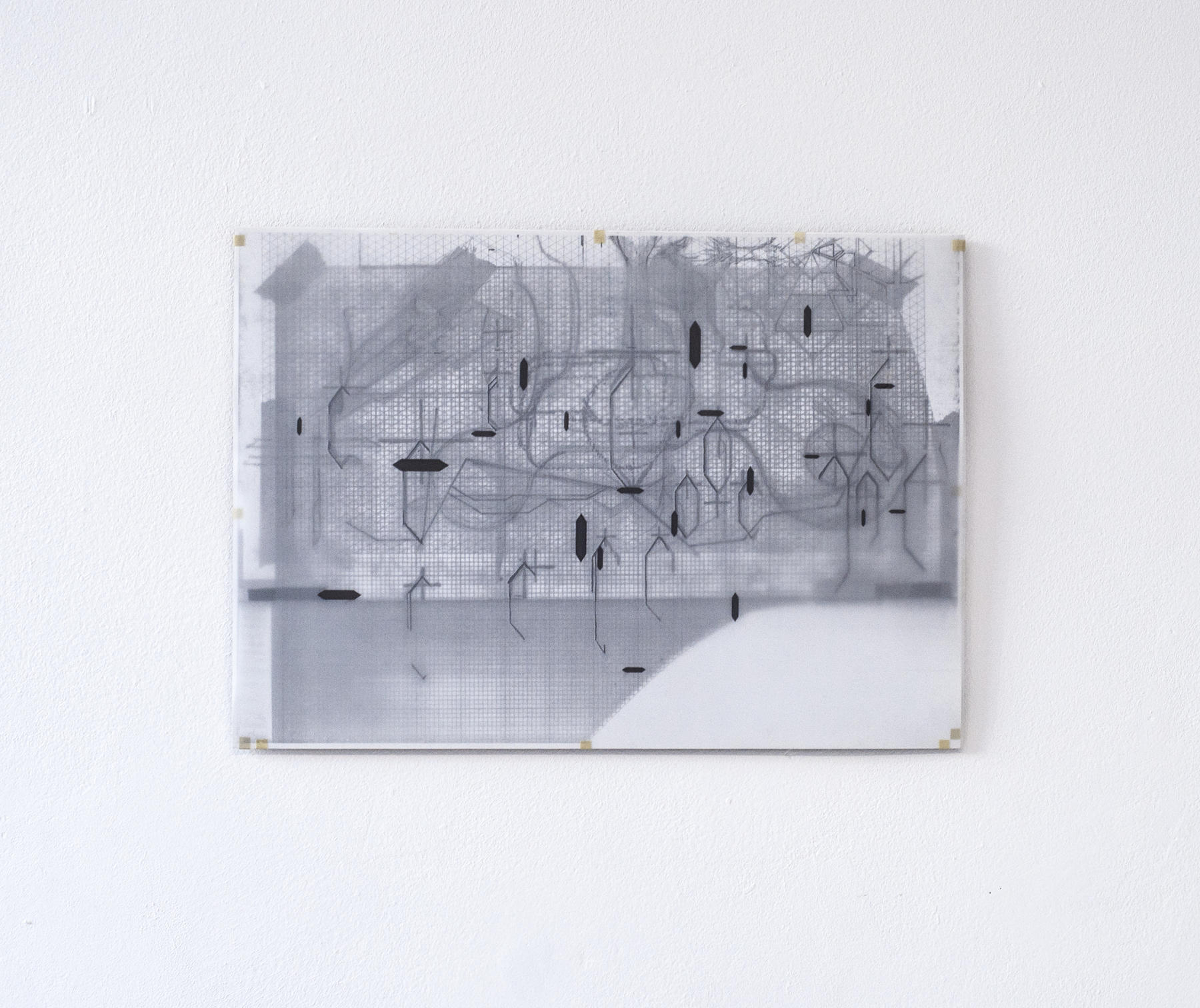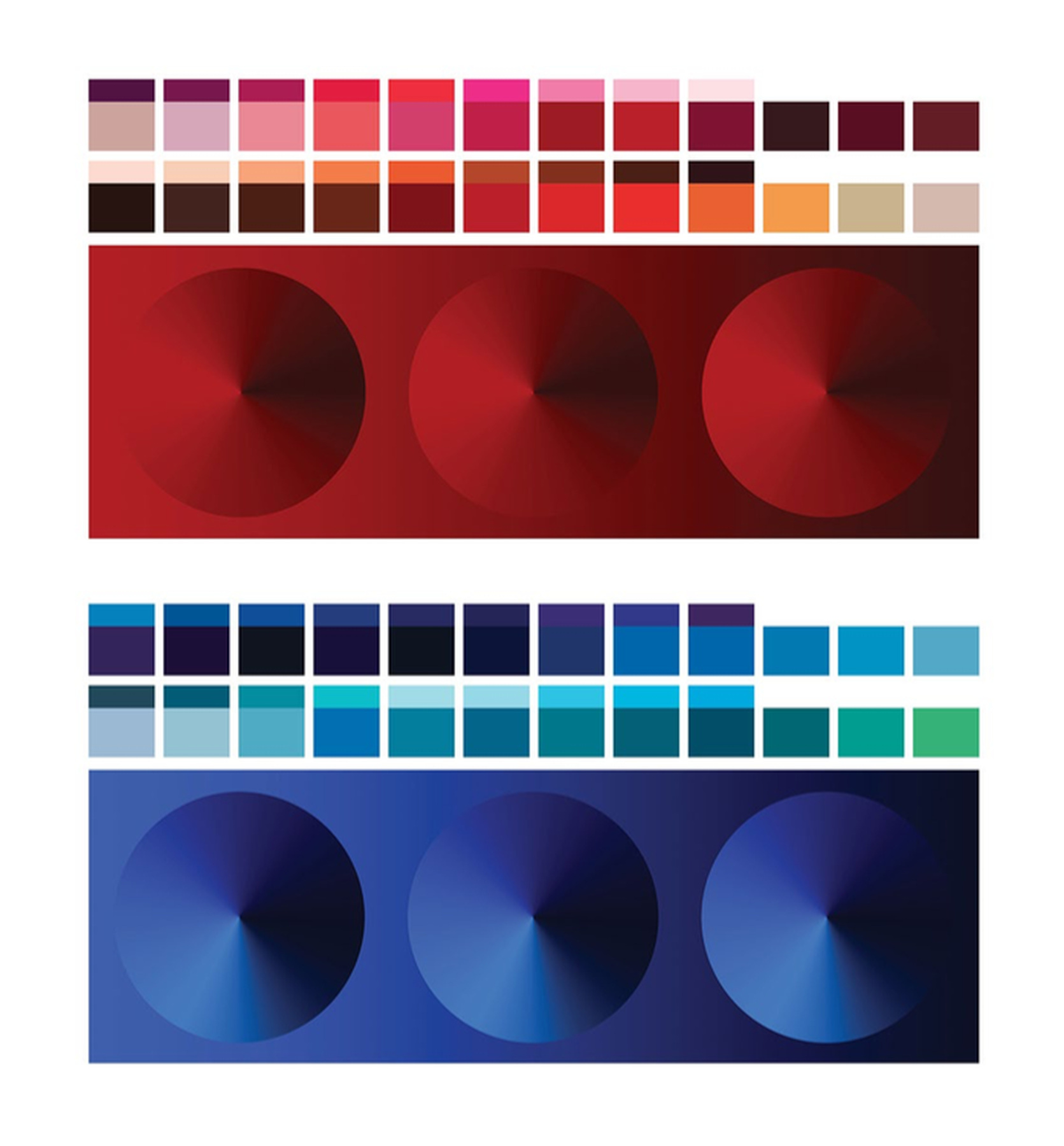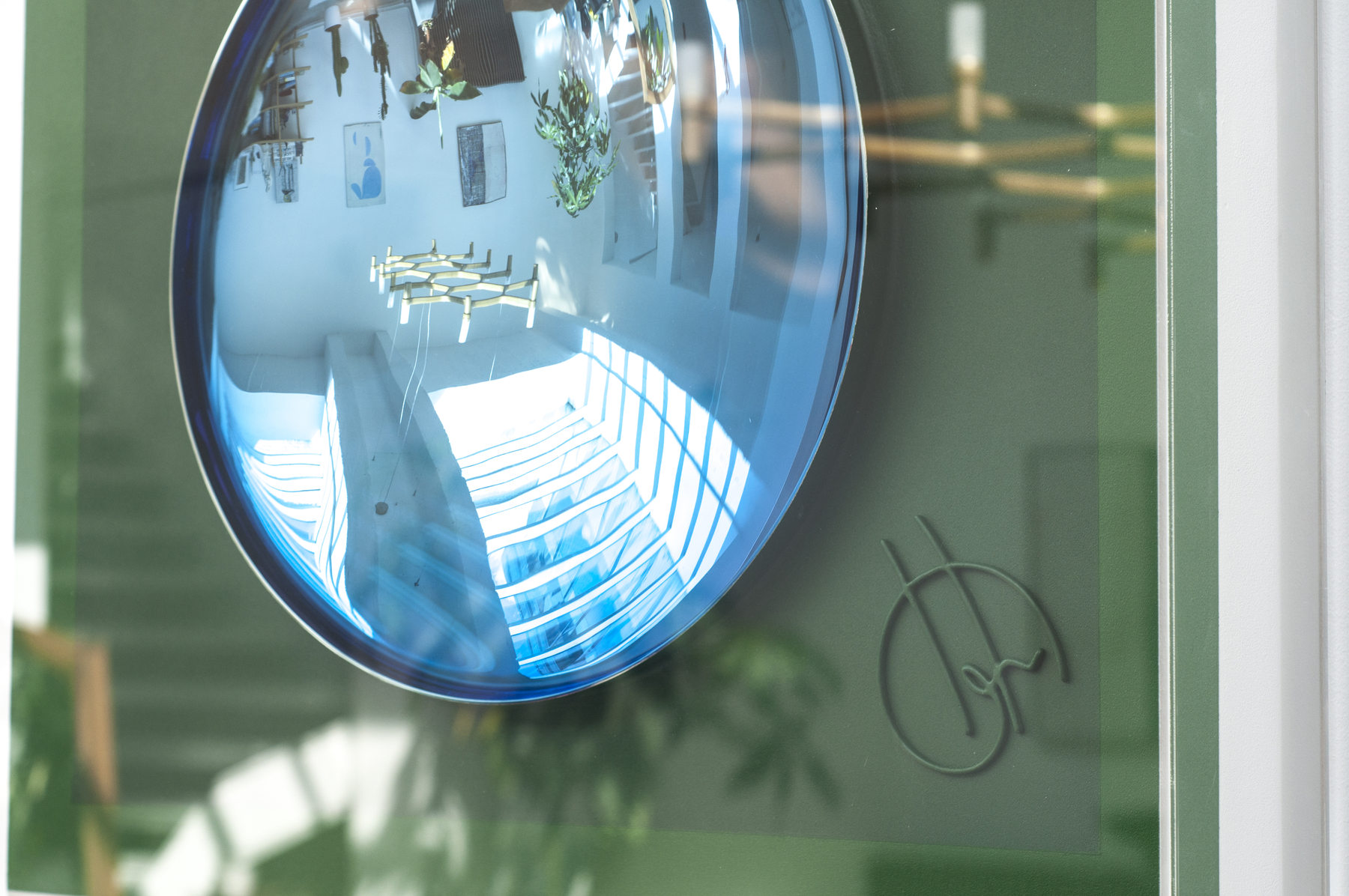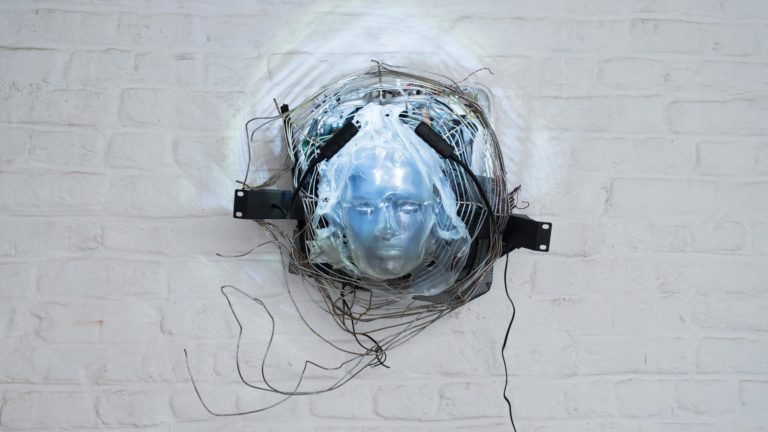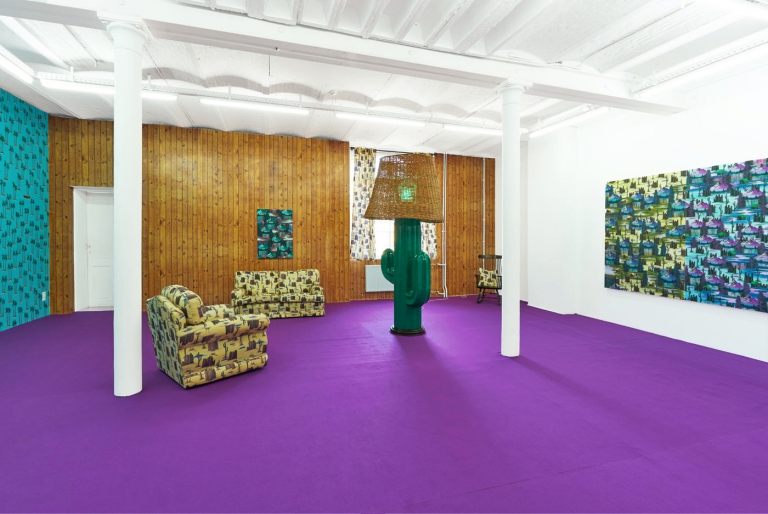Artists: Maxime Christiaensen and Boy & Erik Stappaerts
Exhibition title: Trophies of Atmospheric Intellect
Venue: DMW Art Space, Antwerp, Belgium
Date: September 1 – October 15, 2017
Photography: all images copyright and courtesy of the artists and DMW Art Space
What does abstraction mean today? Is it still aesthetically confined to two- or three-dimensional surfaces, or has it come to transcend them, governing our societies and behaviour in ways that we are only now beginning to understand?
Aesthetically speaking, abstraction is closely related to the historical avant-garde, who devised it to rebel against a bourgeois or academic notion of (figurative) representation. Along with the grid as a recurring motif, movements ranging from Constructivism and Futurism to De Stijl and Bauhaus were deeply fascinated by the machine during the heydays of rapid industrialization. This fascination is apparent from the preference for repetition and the use of standardized patterns, colours and textures. They express the latent wish for the creative act to become mechanical, and the artist to somehow become the machine. This desire was echoed by Andy Warhol, half a century later, in his famous saying: “Machines have less problems. I’d like to be a machine, wouldn’t you?”. Warhol, who claimed to have started out as a commercial artist wanting to be a business artist, spent his entire career perfecting a machine for both art and fame. Despite what one might think, there was only little space left for ironic detachment in Warhol’s Factory. His ingenious embrace of the surface coincided with his aspiration to turn art into a commodity and his authorship into a fashion label – and, in doing so, to make the very notions of artistry and creativity abstract altogether.
Ever since then, the creative industries have greatly expanded, arguably reaching their apex in the nineties with artist-entrepreneurs like Koons, Hirst, Kapoor and Delvoye, to name but a few. Each in their own way perfected Warhol’s “machine”, so to speak, strategically branding themselves and positioning their megabusinesses within the reign of the dominant art market. Meanwhile, a third industrial revolution was manifesting itself through the game-changing inventions and innovations in ICT, among other domains. The ever-increasing use of and dependence on these new technologies severely jeopardizes our common-sense understanding of creativity. For, if the latter doesn’t reside in the act of making (a point that had already been made by conceptual art) and can even largely be outsourced, what is left of it but a historically based, romanticized figment? What will remain of the “work” or labour in the work of art, or, for that matter, of work in general, when faced with the prospect of full automation and algorithmic calculation? Will art stay the exception to the rule? These are questions we should be asking ourselves when thinking about present-day forms of abstraction. The grid is no longer just a pattern rendered on a canvas or in a sculpture; instead, it is something that we currently seem to inhabit.
Trophies of Atmospheric Intellect, a duo show by Maxime Christiaensen and Boy & Erik Stappaerts, is the result of a unique encounter between two artists from slightly different generations. Yet their works engage in a dialogue – a symphony even – that tells us a lot about the (re)current state of abstraction.
Boy & Erik Stappaerts (1969) is the nom de plume of a single artist who, quite tellingly, considers his oeuvre as stemming from two different sources; one responsible for production and the other for its conception. Despite its singularity, his work is full of cross-references, each piece being embedded in a much larger whole. The B&ES Institute, as it is called, exists as much in space as it does in time, or as much in reality as in virtuality. An immense database of archived shapes and colours lies at the heart of it, with nearly infinite variations as a result. The combination of these individual elements leads to visual constellations that are both aesthetically and politically charged. Stappaerts’ research-based practice delicately balances democratic user interfaces with a self-imposed touch of romanticism.
Maxime Christiaensen (1989) is the proper name of a young artist who seems to be reaching for the stars. He replicates his own initials as a template rather than as a signature, which is already indicative of his artistic approach. If not entirely devoid of human touch, Christiaensen’s works flirt with the same glossy aesthetic of the design objects on which we leave our fingerprints on a daily basis. Visually speaking, he carries on the modernist legacy, all while attempting to bring it to perfection – that is, to its finality. Collaborating with high-end tech companies and state-of-the-art technology, he manages to co-create geometric volumes that seem out of this world. There is no place for the organic here, except, perhaps, as a reflection, as if to say: And you? What do you represent? (Ad Reinhardt)
-Pieter Vermeulen, 2017




